It's safe to say that most people don't look forward to doing chores, but this is especially true for people with COPD. Household tasks are unpleasant enough on their own, but they are much worse when you have to do them while struggling to breathe.
Having COPD means your lungs have to work harder all the time to supply enough oxygen for your body's needs. That means they have to work especially hard when you do physically demanding activities, such as many household chores.
If you're not careful, doing chores around the house can make you feel extremely breathless and fatigued. That's why many COPD patients dread doing housework or avoid doing it altogether.
Unfortunately, household chores are a fact of life and something that everyone has to deal with at some point or another. If you have COPD, it's particularly important to keep your home clean and maintain a healthy environment that promotes healthy living.
However, you shouldn't have to sink all of your energy into housework, especially when there's so many other things in life to do and enjoy. You also don't want to risk worsening your symptoms by over-exerting yourself when you clean.
Instead, you can use simple, practical strategies to make many of your household responsibilities easier to do. You can find a variety of new ways to approach daily chores that can reduce the effort and energy you have to expend.
By strategizing, simplifying, and learning to control your breathing, you can make any kind of housework more COPD-friendly. In this post, we're going to help you get started by showing you a multitude of useful tips and techniques you can use to complete housework with COPD.
In the next sections, we're going to give you general tips and advice for managing your symptoms while you do household chores. We'll also take a look at a variety of specific techniques you can use to simplify tasks and approach your chores in new, more efficient way.
We'll show you how to pace yourself as you clean and make your household responsibilities feel less overwhelming. We'll even give you specific, practical tips you can use right away to make tasks like cooking, doing laundry, and vacuuming easier to do.
In This Article:
- Techniques for Conserving Energy While You Do Household Chores
- General Cleaning Strategies for People With COPD
- Targeted Techniques For Completing A Variety of Chores With COPD
- Doing Laundry
- Dusting and Cleaning Surfaces
- Cleaning the Floors
- Doing Dishes
- Cooking
- Gardening and Yard Work
- Personal Tasks Like Grooming, Showering, and Getting Dressed
If you have COPD, then you have every reason to find ways that you can work smarter instead of harder. By minimizing the toll that household tasks take on your body and ability to breathe, you'll have more energy to invest in other things that matter in your life.
Practical Techniques for Saving Energy When You Do Household Chores
The main symptoms of COPD that get in the way of doing chores are breathlessness and fatigue. Even simple tasks like dusting or doing dishes can make you feel exhausted, especially if you have advanced COPD.
If you don't plan carefully and do too much at once, housework can sap up all the energy you have for the day. And if you have COPD, then you know that your energy is precious and limited, and you should conserve it as much as you can.
In the next sections we're going to share some useful tips for scheduling and pacing your household responsibilities in a way that reduces the energy you have to expend. You'll be surprised at how much of a difference some deliberate planning and organization can do for your energy as well as your peace of mind.
Pacing Yourself is Key

Many people with COPD struggle with reduced energy and endurance. This makes it difficult to stay active for long or do physically demanding chores.
That's why it's important to pace yourself and spread your household chores throughout the day. If you try to do too much at once, you'll end up tired and short of breath, or find that you don't have enough energy to finish your tasks.
Break Tasks Down Into Manageable Chunks

The first part of pacing yourself is figuring out how to split up household responsibilities into manageable chunks. That requires planning ahead so you you can fit everything into your schedule without letting chores pile up.
You can start by planning the most physically demanding chores for times when you know that you tend to have the most energy. Prioritize the tasks that are most important first, and get them out of the way before you end up too tired to follow through.
Your plan should be flexible, however, because you can't always know how you'll feel on any given day when it comes. It's an unfortunate, yet unavoidable, reality that there will be times when you feel too sick or run down to take care of chores.
If your list of chores for the day is too long, you might need to pare it down to avoid exerting yourself too much. After all, overexerting yourself today just means that you'll have even less energy tomorrow to take care of the things that need to be done.
If you don't feel well or have too much on your plate, don't be afraid to eliminate tasks on your list. Instead, delegate them to someone else or plan to do them a different day.
It helps to plan the most difficult tasks for days when you have fewer things to do or more time to spread the steps out throughout the day. It may also help to plan in a “sick day” or two so it's easier to take a day off when yo need u to.
You'll find that one of the best things about having a plan is that it makes managing daily life much less stressful and overwhelming. You'll spend less time worrying about how and when you'll get everything done and more time actually doing things.
Conserve Your Energy

The second part of pacing yourself is taking things slowly so you can keep your energy levels high. If you try to rush or work too quickly, you'll just make yourself fatigued and short of breath.
Move at whatever pace feels most comfortable to you and don't push yourself too hard. Remember that you're in it for the long haul; even if you are feeling good, there's no use in tiring yourself out all at once.
When you move at a slower pace, you can also more easily control your breathing and pay more attention to how your body feels. That allows you to better keep your COPD symptoms under control and recognize when you need take a break or sit down.
When you move slowly, it allows you to chose your movements more deliberately and avoid wasting energy unnecessarily. With some practice, you'll find that your endurance improves when you move at a slower, more steady pace.
Take Frequent Breaks

Finally, another vital part of pacing yourself is knowing when it's time to stop. Recognizing when you need to take a break or slow down will ensure that you have enough energy to make it through all the tasks on your list.
With COPD, it's often best to treat physically tiring tasks as a marathon, not a sprint. Plan on taking it slow, pausing for breaks, and giving yourself plenty of time to rest in-between tiring tasks.
You will know that it's time to slow down when you start to feel breathless, fatigued, or notice other COPD symptoms start to act up. When this happens, take as long as you need to sit down, rest, and get your breathing back under control.
You may also need to take a break from your chores and other responsibilities when you experience a symptom flare up or exacerbation. On days you don't feel well, don't be afraid to take the day off or ask for help from family and friends.
Schedule Tasks With Purpose
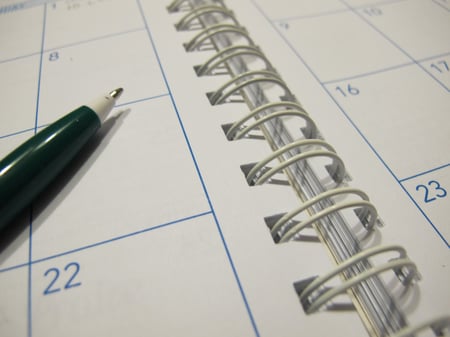
If you want to make your household chores more manageable you need to plan your course of attack. This allows you to identify the easiest and quickest way to get everything done.
Start by making a list of all the household tasks and chores you need to do for the day. Whether big or small, write them down so that you can consider them all together, side by side.
This will help you identify tasks that are best paired together and decide how to prioritize each responsibility. Then, you can put together a plan for how you will approach each task throughout the day.
For example, try to plan chores that you do in the same room or area back-to-back, that way you can get them done more efficiently. For example, if you need to clean the kitchen floor and wipe down the kitchen counters, plan to do both tasks in one go.
This allows you to get your supplies out and carry them to the kitchen just once, instead of twice. By pairing relevant tasks in this way, you'll do less moving about and running around from room to room.
You should also take a moment to think about your route through your home as you move from one task to another. This will allow you to identify opportunities to combine multiple small tasks into one.
One way to do this is to think about whether there are any items around that you should take with you whenever you head out of a room. For instance, if you are heading downstairs to clean the kitchen, you might bring some laundry along to throw into your washing machine on the way.
By taking a more calculated approach, you can eliminate a lot of unnecessary work and inefficiencies from your daily routine. You just have to plan ahead, be precise with your actions, and always be looking for ways to streamline different tasks.
Identify Simple Solutions for Tiring Tasks

If you want to reduce the amount of energy you expend doing housework, you have to get into the simplifying mindset. That means paying attention to how you do your chores and eliminating as many difficult steps as possible.
But first, you need to take a moment to really think about which tasks tend to give you the most trouble. After all, you need to be able to wrap your head around the problem if you want to come up with a solution.
When you're going about your day, you might not realize exactly what is wearing you down, only that you feel breathless and fatigued by the time you're done. That's why you need to take time to reflect, step by step, on what sorts of tasks and actions are sapping your energy the most.
Start out by thinking about what kinds of chores you tend to want to avoid and why. Do you avoid them only because you don't enjoy them, or is it because they make you feel tired, or make it difficult to breathe?
Write down a list any chores you identify that leave you feeling fatigued or cause your COPD symptoms to act up more than usual. Then, think about what specific movements or actions make you feel sore, short of breath, or put extra strain on your body.
For example, if you always feel tired after doing laundry, try to pinpoint exactly what it is about doing laundry that makes it difficult. Do you have trouble bending over repeatedly to handle clothes, or do you get breathless carrying armfuls of clothes up and down the stairs?
Often, you can find a way to eliminate the difficult steps or set the task up in a way that makes those steps easier. For instance, if you find stooping over to retrieve things out of lower cabinets tiring, then simply moving those items up to higher shelves is a great and easy-to-implement solution.

Even if the solution seems obvious, it's easy to miss if you're not looking for it. Once you take the time to analyze your methods and explicitly identify the problem, simple answers often makes themselves clear.
If you take the time to think it through, you'll be pleasantly surprised at how many simple solutions you can come up with. Sometimes, all it takes is some thought and organization to make tiring household responsibilities significantly more manageable.
Control Your Breathing

You can help yourself breathe easier while doing chores if you take care to control your breathing while you work. You can do this by practicing COPD breathing exercises like diaphragmic and pursed lips breathing.
We'll go into more detail on how breathing exercises can help you complete chores later on in this article when we talk about specific cleaning tasks and tips. In those sections, we'll show you a variety of ways you can incorporate breathing techniques as you go through the steps to complete different chores.
You can also learn more about controlling your breathing in our more detailed guide, Breathing Techniques for COPD.
Practical Strategies for Completing Household Chores with COPD
Living with COPD requires coming up with many creative solutions to things that the disease makes difficult to do. However, once you make the necessary adjustments, you'll find that you can handle much more than you could before.
When COPD makes your life more complicated, the answer is often simple. By finding ways to use less energy and simplify difficult activities, you can tackle all kinds of household tasks with much more ease.
General Cleaning Tips

In these next sections, we're going to go through a variety of common household chores and give you specific, actionable solutions you can use to make them easier to do. We'll cover everything from dusting and vacuuming to sanitizing surfaces, doing laundry, and more.
But first, let's go over some general techniques that make tackling just about any cleaning task simpler. These tips will help you avoid unnecessary physical exertion and eliminate a variety of minor and major inconveniences.
Use a Pocketed Apron, Tote, or Cart
 |
| Image by Plusea |
Pocketed aprons and rolling carts are indispensable tools that every person with COPD should own. They make all kinds of household tasks easier by allowing you to collect multiple items at once and carry them from place to place in your home more easily.
When you do chores, you can use your apron or cart to gather up all your cleaning supplies and transport them together. That way, you'll never have to take make more than one trip to your supply closet. They can also reduce the amount of bending and reaching you have to do by keeping all of your supplies within easy reach.
A pocketed apron allows you to carry a variety of cleaning tools right on your waist, that way you can keep your hands free while you work. However, it will also add extra weight to your body that you'll have to carry as you move around.
Using a rolling cart is often the best option for transporting multiple items without having to carry the weight yourself. However, carts are more pricey and sometimes less practical when you need to maneuver around stairs and narrow spaces.
If you live in a two story home, you could solve the stairs problem by getting a cart for each level in your house. You could also keep an over-the-shoulder bag or tote by the staircase to help you carry things up and down the stairs.
A handheld tote or tray can also be useful, although they can be heavy to lug around when loaded up. However, they are more useful than aprons for carrying items other than cleaning supplies when you do chores like organizing, picking up, and doing dishes.
Whichever tools you choose, you'll find that you can do tasks much quicker and easier when you don't have to make multiple trips from room to room. It saves time, reduces strain on your muscles, and reduces the total amount of walking you need to do.
Work in a Circle
You can also avoid unnecessary walking by making circular trips around the house. Compared to going back and forth from one room to another, it can significantly reduce the total distance you have to travel.
This is a particularly helpful method to use when you're picking up around the house and have a lot of various items to put away. As you go through each room, put away the items that belong there, and load up any items that belong elsewhere onto your cart. Then, simply deliver the items on your cart to the correct room when you pass it as you make your circle around the house.
Avoid Bending and Stooping

You should keep any items that you have to use often in the most convenient, easy-to-reach places. You shouldn't have to bend over or stoop down to reach tools and supplies you use every day.
For example, it's a good idea to store the cleaning supplies you use most often on shelves that are at waist level or higher. However, you shouldn't store them so high that you have to strain or climb up on a chair to reach them.
Place Stools Strategically Around Your Home
Sitting down while you work can help you conserve your energy and reduce shortness of breath. When you're doing household chores, tall stools are often the most practical seating choice.
High stools are easier to get up from because you can easily move from a seated to standing position without having to lift your body up far. You just have to slide off the edge and straighten yourself up, unlike pushing yourself up from a lower chair.
As you do your household chores, look for stationary tasks that are easy to do while sitting in one place. For example, chores like cooking, washing dishes, or folding laundry are often easy to do sitting down.
It's also nice to have a shorter stool on hand to help you do tasks that are low to the ground. It allows you to reach lower cabinets, shelves, and appliances like the dishwasher and dryer without having to bend over or stoop.

If you don't have any already, consider investing in a couple of stools to place in strategic places around the house. That way, you will always be able to find a seat nearby whenever you need it the most.
Some ideas for areas that could benefit from convenient seating include the kitchen, laundry room, bedroom, bathroom, and closet.
Specific Techniques for Completing Common Household Chores
While the tips we've discussed so far are great starting points for making chores less tiring in general, we still need to address how to do specific chores in a way that's easier with COPD. Luckily, we have a variety of targeted tips and techniques for tackling all kinds of common household tasks with ease.
In the next sections, we'll go into more detail on specific methods you can use to simplify everyday chores like cooking, yard work, and general cleaning tasks. No matter how severe your disease and symptoms, you can make household chores more manageable using some of the following practical tips and techniques.
Doing Laundry
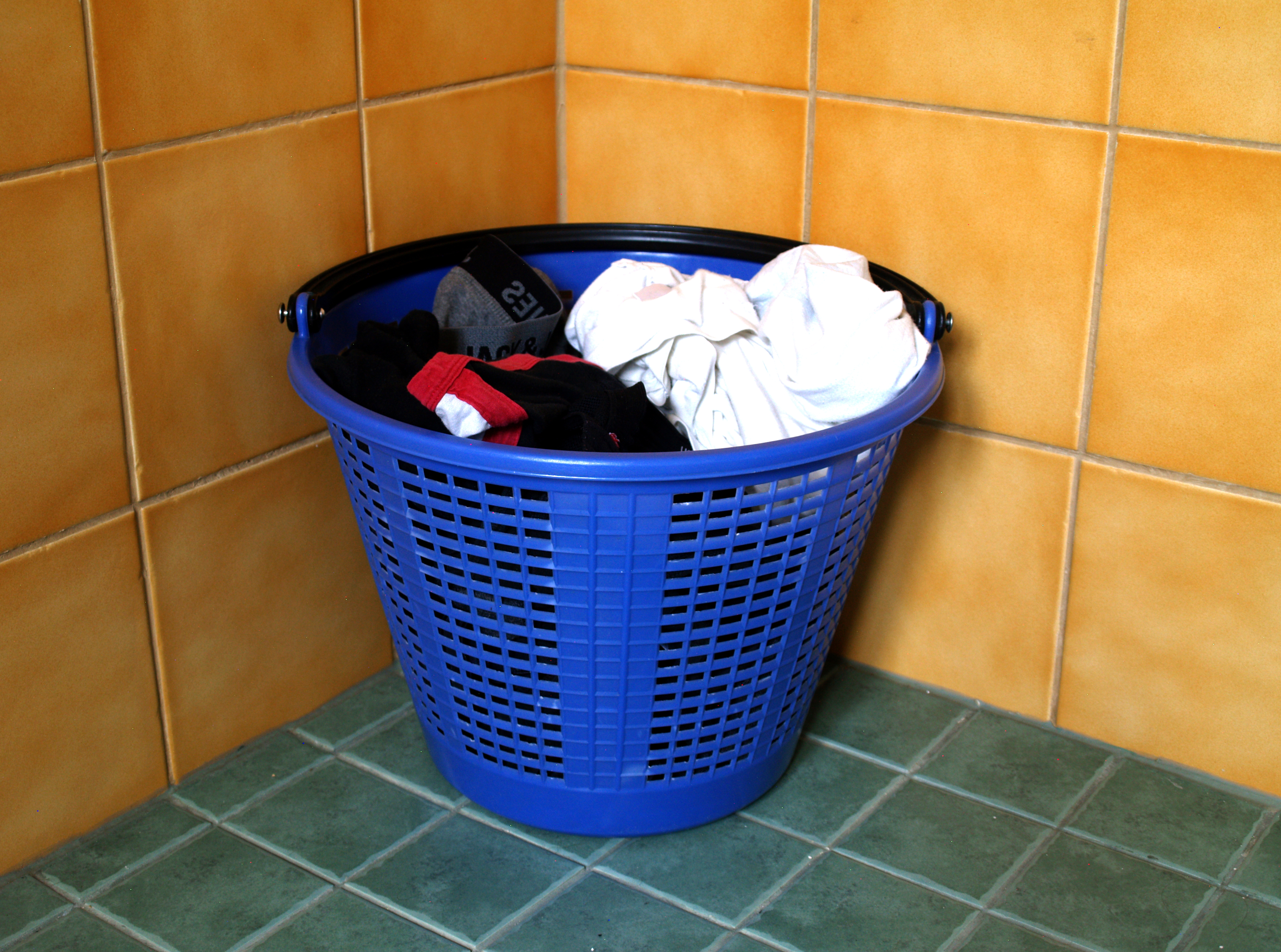
Although most people don't think of it this way, laundry can be a physically demanding task. It usually requires repeated bending, lifting, and walking to haul clean and dirty laundry around the house.
Luckily, there are several ways to reduce the physical demands of washing and putting away your clothes. You can do this by getting better tools and by changing the way that you go about handling laundry days.
Sit Whenever Possible
First of all, consider sitting on a stool while you fold your clothes and when you move them between your washer and dryer. A short stool is often best, because it prevents you from having to stoop down to retrieve your clothes.
When folding or sorting out your laundry, you can also move to a table or counter where you can sit more comfortably. It also helps if you do all your folding at once, that way you don't have to make as many trips back and forth from the laundry room.
Find a Better Laundry Basket
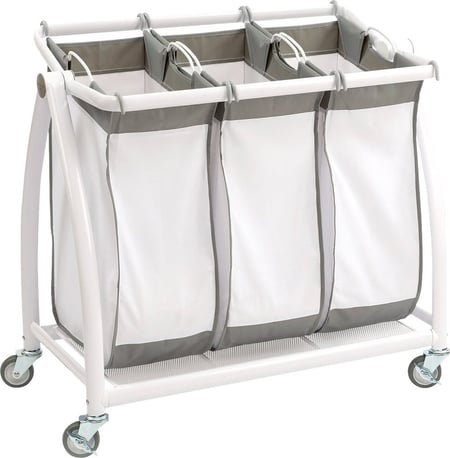
Traditional hand-held laundry baskets are unwieldy and difficult to carry around. If you have limited mobility, balance, or get short of breath easily, it can be very tiring to haul laundry baskets by hand.
Instead, consider getting a wheeled laundry basket so you can roll it from place to place. This makes it easier to walk by taking the weight off your hands and making it significantly easier balance.
A rolling basket may not enough, however, if you have to frequently carry your basket up and down flights of stairs. In that case, consider getting a fabric laundry basket or bag you can sling over your shoulder whenever you need to carry clothes up and down the stairs.
Don't Haul Too Many Clothes at Once

Piles of clothes can get heavy, especially damp or wet clothes out of the washer. If you struggle with the weight, lighten the load by putting a limit on how much you carry at once.
Instead of trying to haul an entire load of laundry across the house, try loading up just one small stack in your basket at a time. It means making more trips, but you might end up less worn out than you'd be hauling heavy baskets around.
You can also reduce the extra work by transporting small stacks of laundry as you do other things around the house. Just remember to grab some clean clothes whenever you pass the laundry room in the direction of where you need to deliver the items.
The same works for dirty clothes too; just try to remember to take an armful with you anytime you leave a room that has dirty clothes. Once you get the hang of it, you'll never again have to make a special trip across the house just for laundry.
Invest in a Front-Loading Washer

Top-loading washers are standard in most homes, but they can be very difficult to use if you suffer from COPD. The deep barrel can force you to reach and strain every time you need to retrieve your clothes.
Front-loading washers, however, are designed similarly to dryers, with the barrel opening up to the side of the machine. This makes it much easier to reach into and move clothes in and out of your washer.
It also reduces the amount of bending and lifting you have to do when you move a load directly from the washer to the dryer. Instead of reaching into the top and lifting wet, heavy, clothes by the handful, you can simply knock the whole load out into a basket and dump them into the dryer with ease.
Don't Let Housemates Off the Hook

There's no reason to do extra work when you have others around you that can help. If you live with family or housemates, ask them to help you with laundry in whatever way they can.
For example, you could set up one day a week where everyone delivers their own basket of dirty laundry to the laundry room. Then, when you're finished, they can collect the clean clothes to bring back to their rooms themselves.
You may even consider changing up your whole system to have others in your household take care of their own loads of laundry themselves. It might be a difficult adjustment for your family to make, but it could save you a lot of time and energy by reducing your overall laundry burden.
Dusting and Wiping Down Surfaces

All horizontal surfaces get dirty over time, including your cabinets, kitchen counters, and windowsills. If you don't wipe these surfaces down regularly, they will collect all sorts of dust, pollen, and other respiratory irritants that trigger COPD symptoms.
But even though dusting and cleaning off surfaces seems like a simple task, it can be tiring when you suffer from breathlessness or fatigue. Luckily, you can reduce the energy and effort it takes by carefully choosing your cleaning and dusting techniques.
Get the Right Tools for the Job
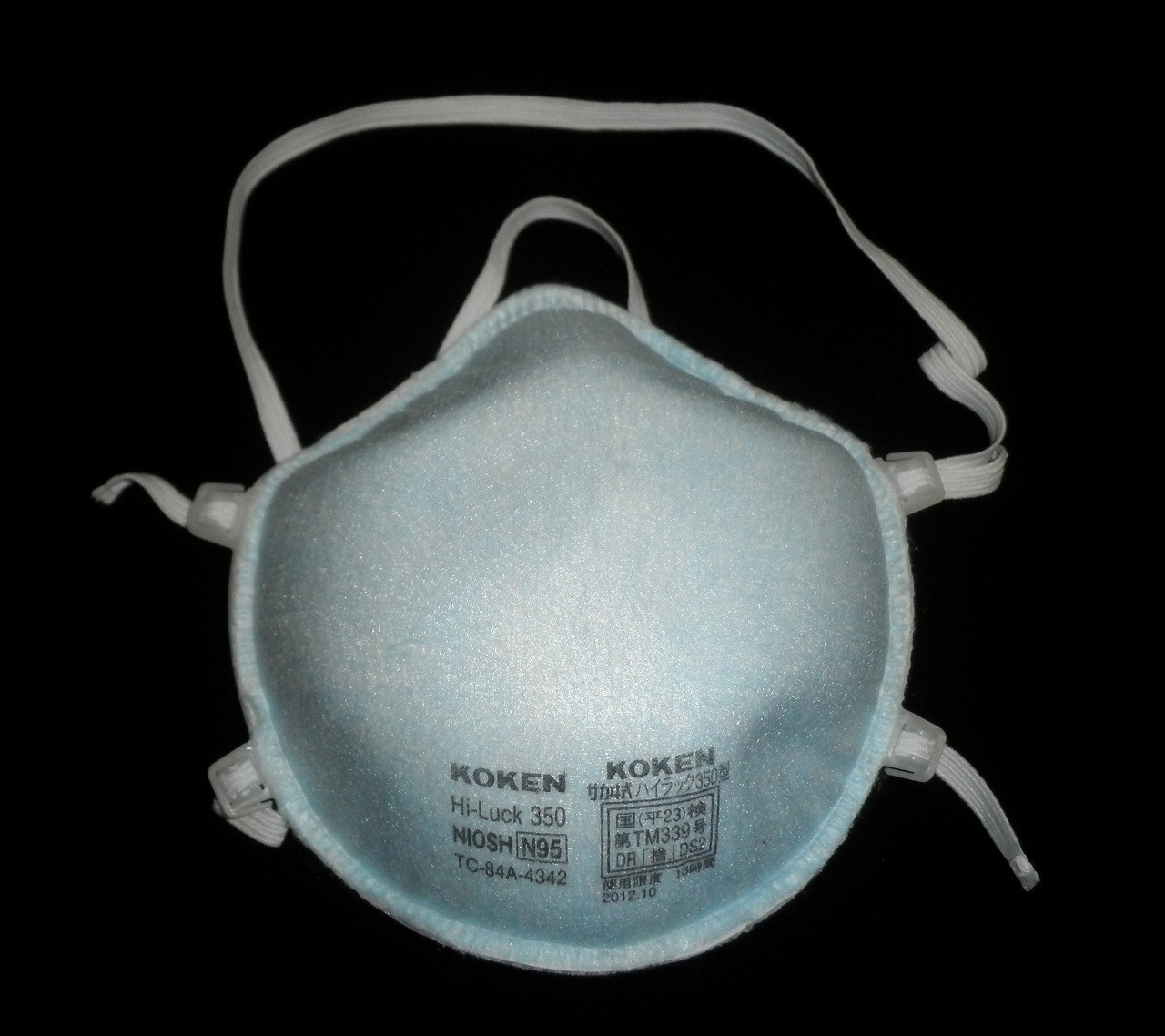
First of all, you'll need a long-handled dusting tool to help you reach difficult places. The right duster should be long enough to allow you to reach high shelves in your home as well as low places like baseboards without straining.
You may also want to invest in particle masks to use whenever you dust or use cleaning sprays. A certified N-95 respirator will filter out many of the small and large airborne particles, including dust and tiny droplets, that could irritate your lungs and make your COPD symptoms worse.
Your general cleaning solution should be something mild and unscented so it won't irritate your lungs and inflame your symptoms. Avoid noxious chemicals like bleach and ammonia, which are particularly bad for your lungs, especially when you have COPD.
You should also buy a bucket and sponge to use for cleaning products instead of spray bottle whenever possible. This will reduce your chance of breathing aerosolized chemicals into your lungs while you work.

If you must use a spray, be particularly careful not to breathe in any droplets or fumes. No matter what, make sure that wherever you clean is well-ventilated; take the time to open some windows or set up a fan before using any kind of chemical in a small or enclosed space.
Time Your Breaths With Your Arm Movements
If you suffer from severe COPD, even just working your arms to dust or wipe things down can make you feel short of breath. Having to strain up to reach high places or forward to reach across counters and tables can make it even more difficult to breathe.
You can reduce the strain significantly, however, if you deliberately control your breaths. It helps you pace yourself, control your movements, and breathe easier while you clean.
Begin by choosing one small area to dust or wipe down, such as your kitchen counters, a bookshelf, or one section of a room. Take some time to gather your supplies and take some deep breaths before you start.
Then, inhale through your nose for 2-3 seconds as you reach your arm forward to position your tool where you need it to be. Then, exhale slowly for 5-6 seconds as you move your arm up and down, back and forth, or in a circular motion.
Repeat this several times and stop as soon as you start to feel tired or start losing control of your breath. Then, take a short break to rest your arm and restore your breathing to normal before you start again.
Controlling your breath in this way allows you to get more done without struggling to breathe by the end. You can adapt this method to a variety of different chores by finding similar ways to match repeated movements with your breaths.
Tackle One Zone at a Time
Certain dusting and cleaning tasks can seem overwhelming, especially if you have a large home. Whole-house tasks like wiping down all the windows or cleaning the baseboards are necessary every so often, but they can be difficult to manage when you have COPD.
For large-scale chores like these, it's best to plan ahead so you don't feel pressured to do them all at once. Instead, take some time to organize a schedule for tackling these responsibilities in increments throughout the year.
For instance, it's generally not a good idea to schedule two major, whole-house cleaning tasks for a single week. Trying to manage too many large projects at one time will only stress you out and set you up for exhaustion.
Similarly, don't try to do a whole-house cleaning project all in one day. Instead, split the task into smaller chunks that you can do one at a time and spread out over a few days or weeks.
One way to split up these tasks is to divide your house into several “zones.” Each zone should have clear boundaries and be similar in size.
Then, use these zones to help you split up and schedule large cleaning tasks. For example, if you need to clean all the baseboards in your home, you could plan it out so you tackle the baseboards in one zone each day.
This is also a great method for repeated tasks, like dusting, that you have to do over and over again. If you assign one zone to each day of the week, you can ensure that you get to every part of your house in a deliberate and timely matter.
Once you've completed every zone for an ongoing task like dusting, you simply start at the beginning of the rotation the next day. That way, each zone gets cleaned once a week, and you'll never have to do too much at one time.
Cleaning the Floors

Sweeping, mopping, and vacuuming can be daunting chores when you suffer from COPD. They all require a moderate amount of walking and pushing that can make you tired and short of breath.
To make these chores easier to manage, you need to learn to control your breathing while you work. You also need to make sure you have the right tools for the job so you don't waste any energy unnecessarily.
Use Long-Handled Tools
It's important to have a mop and broom with handles long enough that you don't have to stoop when you use them. Just make they aren't too heavy; look for tools with fiberglass handles, which are stronger than plastic and much lighter to use than wood.
Match Your Breathing With Your Movements
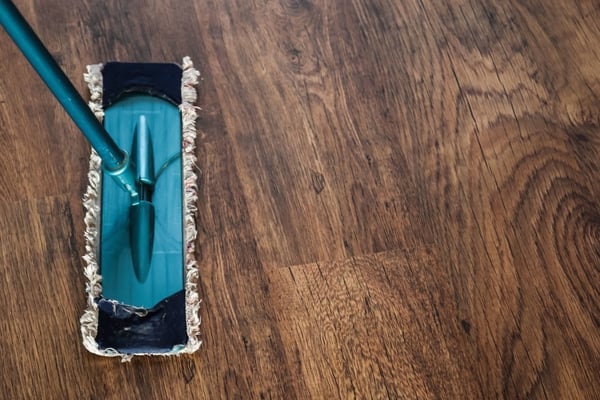
Sweeping, mopping, and vacuuming all take similar, rhythmic movements to complete. This makes them perfect tasks for training yourself to control your breathing while you work.
Start off by taking a couple of deep breaths, practicing the pursed lips breathing technique. That means taking a deep breath in through your nose, and exhaling slowly through pursed lips for twice the amount of time that it took you to inhale.
Then, you use the exact same breathing technique while you clean, except you do your best to coordinate each breath with a movement that you make. In the case of sweeping, vacuuming, and mopping, you time your inhale and exhale with your steps and the strokes of your cleaning tool.
Here's how you do it:
- Get ready with your broom, mop, or vacuum cleaner. Start by taking a deep breath in, through your nose, for about 2-3 seconds.
- Then, exhale for 5-6 seconds as you make the first movement with your cleaning tool (e.g. pushing it forward.)
- Inhale for 2-3 seconds through your nose once again as you pull your broom, mop or vacuum back to the starting position and prepare to make another movement.
- For Vacuuming: Exhale when you push the vacuum and/or step forward, inhale as you pull the vacuum back toward you and/or step back.
- For Sweeping: Exhale as you sweep the broom across the floor and take a step, then inhale as you pause to re-position your broom to sweep a new area.
- For Mopping: Exhale as you push the mop forward and scrub the mop against the floor. Inhale as you pull the mop back toward you.
Doing the Dishes
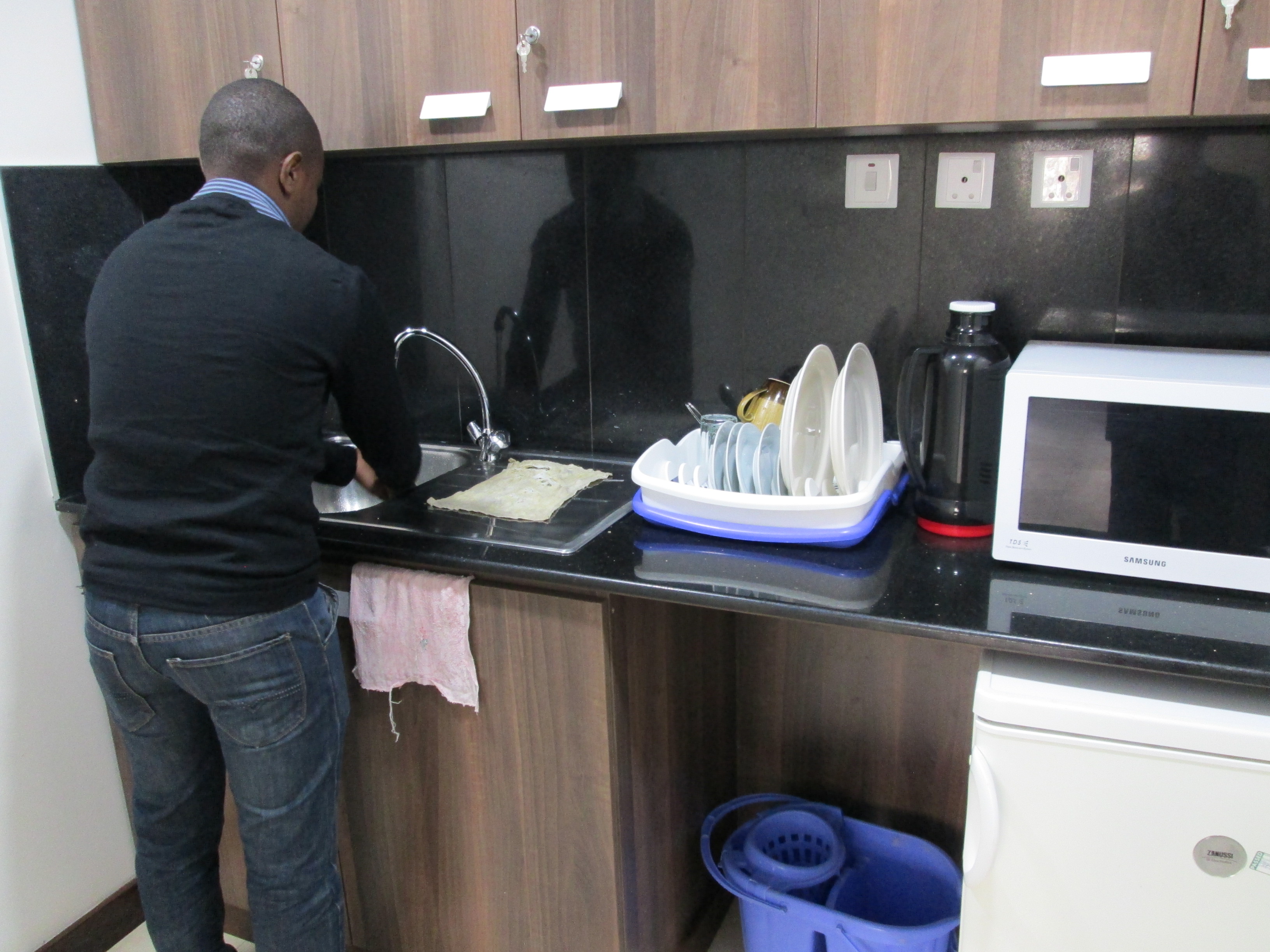
Washing the dishes is one of those daily chores that just about everyone seems to dread. But if you suffer from COPD, then doing dishes can be a genuinely tiring task.
Luckily, dirty dishes are easier to handle if you use the right techniques. The following tips will help you conserve your energy and handle dishware with ease.
Rinse Dishes Right Away
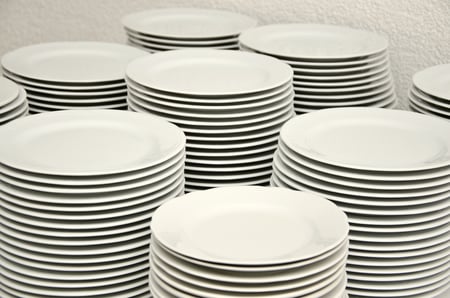
The worst and most tiring part of doing the dishes is scrubbing away at old, dried, cemented-on foods. However, you can skip that part entirely if you wash your dishes immediately after you eat.
When there's no dried-on foods, most dishes just need a quick rinse with no soaking or scrubbing required. You'll be amazed at how much time and effort (and water!) you can save once you get into the habit of washing your dishes right away.
Sit While You Work
Cleaning the dishes doesn't require much moving around, which makes it the perfect task to do sitting down. All you need is a chair or stool that's tall enough to allow you to reach into your sink while you sit.
You can also sit while loading the dishwasher if you use a short stool. This is another time when your cart can come in handy; just load your dishes from the sink into the lower shelf of your cart so you can reach them from your low seat by the dishwasher.
Lighten Your Load
The best way to save energy on doing dishes is to give yourself fewer dishes to wash. That means limiting the number of pots, pans, and bowls you use when you cook as well as the dishes you use to serve food.
One way to do this is by choosing recipes that require fewer steps to make. For example, you can make delicious one-pan meals and casseroles that only use a single piece of cookware and result in fewer dishes to clean.
It can also help to re-use dishes and utensils while you cook. Avoid putting spoons, spatulas, pans, and other dishware in the sink until you're positive you won't need to use them again.
You can also reduce your dirty dishes load by eliminating fancy serving dishes and plates. Instead, serve food out of the same containers you cooked them in or have family members serve themselves straight from the stove.
Outside of special occasions, there's also no need to use extra dishes like appetizer and salad plates when you dine. Put all the food for your meal on a single plate and you'll have much less work to do once you're done.
Cooking
Cooking meals takes a surprising amount of work and can be a very daunting task for COPD patients. Between shopping, prep work, and the actual cooking task, it can take up a lot of your energy and time.
However, making home-cooked foods is the best way to maintain a healthy diet and weight. That's why it's important to find techniques that make cooking more manageable and help you save energy while you work.
Eat Near the Kitchen
Whenever you can, try to eat your meals as close to the kitchen as possible. That way, you won't have to carry anything too far as you set up and clean up after meals.
You should also keep a rolling cart in the kitchen to help you carry food, supplies, and dishes around the room. This will make meal prep easier and reduce the effort it takes as you move items from place to place.
Simplify Meal Prep

Often, the most difficult part of cooking is chopping up fruits and veggies and gathering up all the ingredients you need. That's why it helps to split this step up from the main cooking task.
Instead of trying to manage all the prep work while you cook, look for opportunities to prepare your ingredients ahead of time. For example, you could do all your chopping and measuring for dinner in the morning so your ingredients are ready to go when it's time to cook.
It also helps to buy pre-chopped and pre-peeled produce from the grocery store, that way you don't have to do it all yourself. However, pre-processed produce is generally more expensive and won't keep as long before it spoils.
Make Enough for Leftovers
You can reduce how often you have to cook by making more food at one time. That way, you can freeze or store the leftovers in the fridge and have a second meal another day.
This is easiest to do with foods like soups, pastas, and casseroles. The ingredients for these meals are easy to scale up and the leftovers hold up well to re-heating.
Other Cooking Tips

Because cooking is such a large, important task with many different parts, we can't cover it completely in this guide. Luckily, we have another guide you can read that is specifically dedicated to shopping and cooking with COPD.
There are so many ways to cook and so many different steps that there are plenty of opportunities to improve the process. If you want to learn a multitude of practical techniques you can use to make shopping, meal prep, and cooking easier, take a look through our comprehensive guide on how to manage home cooking with COPD.
Gardening and Yard Work
Yard work like mowing, weeding, and gardening can be daunting for people with COPD. These tasks are very physically demanding, especially in the summer heat.
However, with the right tools and timing you can make yard work much easier to complete. Check out the following tips and techniques to learn how to finish outdoor chores without exhausting yourself or putting your lungs at risk.
Watch the Weather
When you have COPD, you have to be especially cautious anytime you work outside. It's important to protect your lungs from a variety of outdoor hazards including dust, pollution, and allergens.
It's also important to keep yourself cool, as overheating is hard on your lungs. You risk worsening your COPD symptoms or getting too dehydrated if you work too long in the sun.
To avoid any problems related to the weather, air quality, or heat, you should do your best to only do yard work when the conditions outside are good. That means checking your local weather, pollen, and air quality reports before spending any extended time outdoors.
Consider Your Mowing Options
Mowing the lawn by hand takes a lot of strength and a lot of walking out in the heat. If you can, it's best to delegate mowing to another household member or hire someone else to do the job for you.
If that is not an option, then try to invest in a lawnmower that's easier for you to use. A riding lawnmower is the best option, but they are also expensive and bulky to store.
If you only have a basic mower, however, you can still upgrade without breaking the bank. Try to replace it with a self-propelled or self-starting mower to save yourself a lot of effort and time.
Get the Right Yard Work Tools

When picking out lawn care tools like rakes and shovels, always go for the long-handled varieties. That allows you to work with good posture and avoid bending over while you work.
The hose is another heavy yard tool that can be a struggle to use. You can make it easier to handle, however, by getting a lighter-weight hose and a spool so you can reel it up easily after you use it.
Plan Your Garden Carefully
When planning a garden, consider its proximity to where you store your garden tools. You may even consider getting a garden shed so you can keep your supplies even closer at hand.
It also helps to use raised garden beds instead of ground-level beds so they are easier to reach and work in. You can even buy raised bed kits and pre-assembled frames so you don't have to build the raised bed yourself.
Another alternative is container gardening, which is much less tiring than having to work the ground. You can save money on pots and planters by buying them second hand or getting creative with containers you have around the house.
Personal Tasks Like Grooming, Showering, and Getting Dressed
Besides household chores, other basic tasks like bathing, putting on clothes, and doing up buttons can be difficult when you have limited strength, energy, and mobility. These are tasks that many people with advanced COPD tend to struggle with.
We've covered these topics in more detail in our guide on simplifying daily tasks with COPD. Read through that guide to learn about more tools and techniques you can use to make personal care and other daily tasks more manageable.
Final Tips
Managing the responsibilities of daily life while also managing a chronic disease is never easy. It takes a lot of practice and patience to re-work and adjust your routines to the challenges of COPD.
Most patients need extra time, help, and support to keep up with all the tasks and chores that they need to manage. It helps to get advice from other patients in person or online who are going through the same struggles as you.
For more tips and information, consider joining a support group or organization for patients with COPD. You can start by checking out copd-support.com or the American Lung Association's Better Breathers Club.
You can also get lots of practical ideas and information from COPD patients on forums and other online communities. You can learn from archived discussions on daily living or start a new conversation to ask for specific solutions or advice.
You can also talk to your doctor about patient support groups or pulmonary rehabilitation classes in your area.
Conclusion
There are many ways to adjust how you do household chores that can make them consume less of your time and energy. There are also many techniques you can use to reduce shortness of breath and make it easier to breathe while you clean.
After making it through this guide, you should have a variety of practical ideas to add to your COPD tool belt. Once you take the time to assess your current cleaning strategies and identify areas to improve, you'll find there are many ways to apply these techniques to tasks in your daily life.
Think of the ideas in this article as a jumping off point for making your life and your home more COPD-friendly. As you go, you'll find more and more ways to solve other unique problems you face as a result of your COPD.
To keep yourself motivated, remind yourself to focus on the things that you can do instead of the things you can't. When all else fails, often the best thing to do is hire someone else to help you get things done.
You can also talk to your doctor, visit COPD forums, or talk to other COPD patients to learn about creative solutions others have come up with. There's no reason not to utilize whatever tools and resources are available to make life easier with COPD.


.png)



